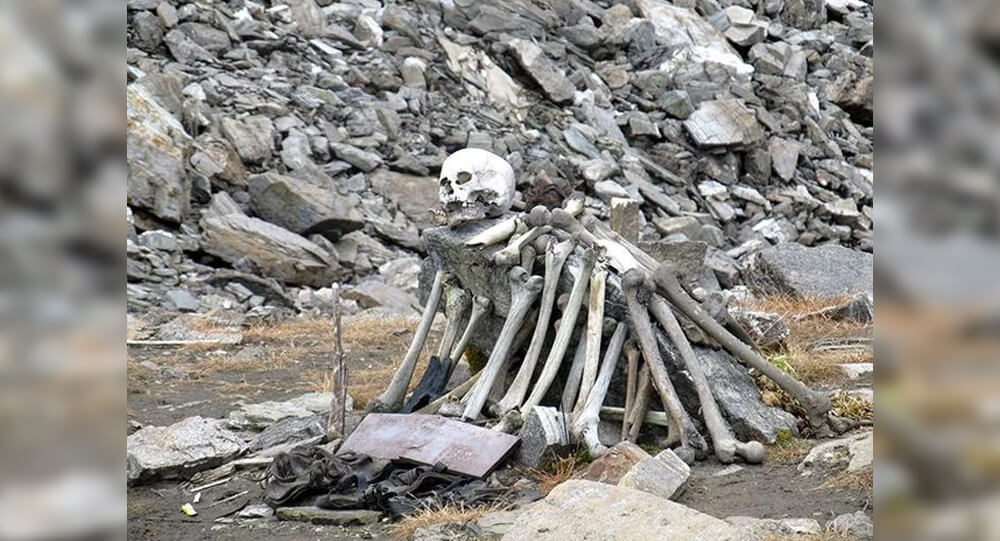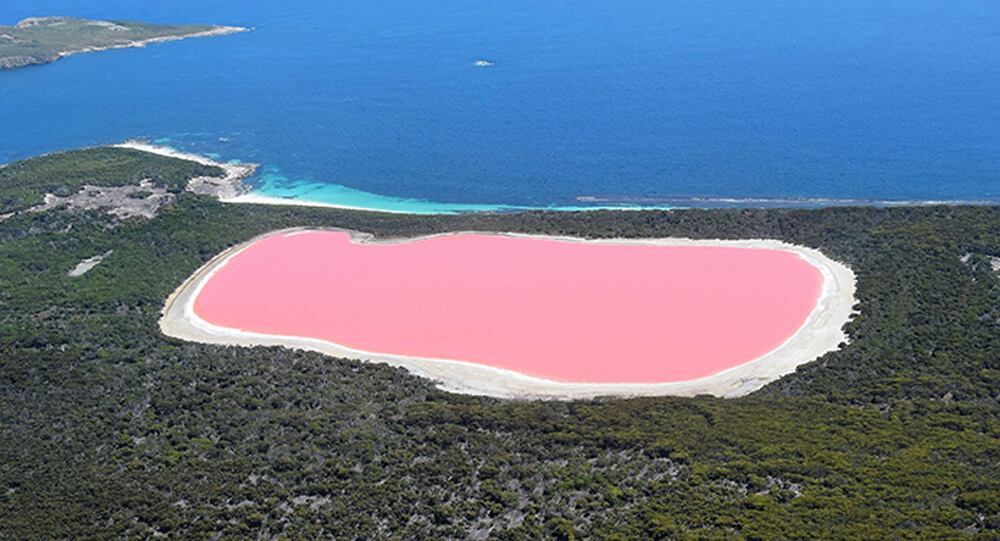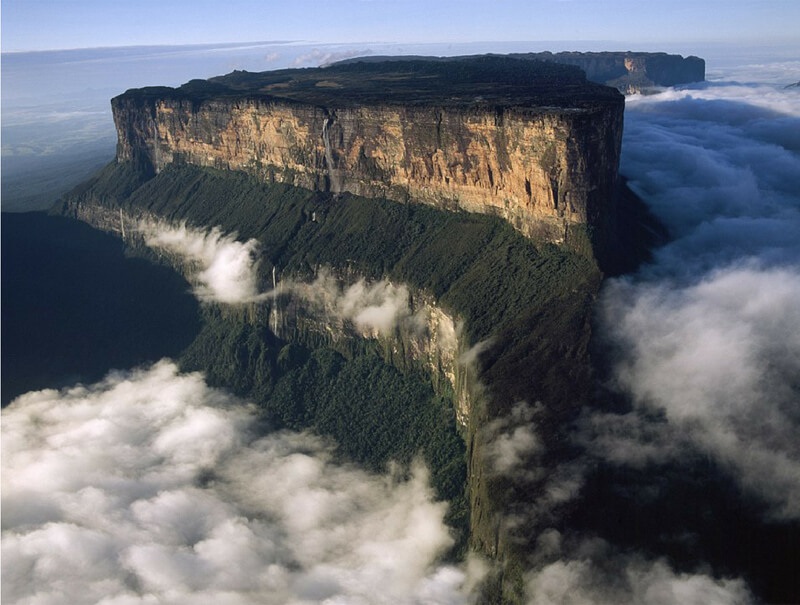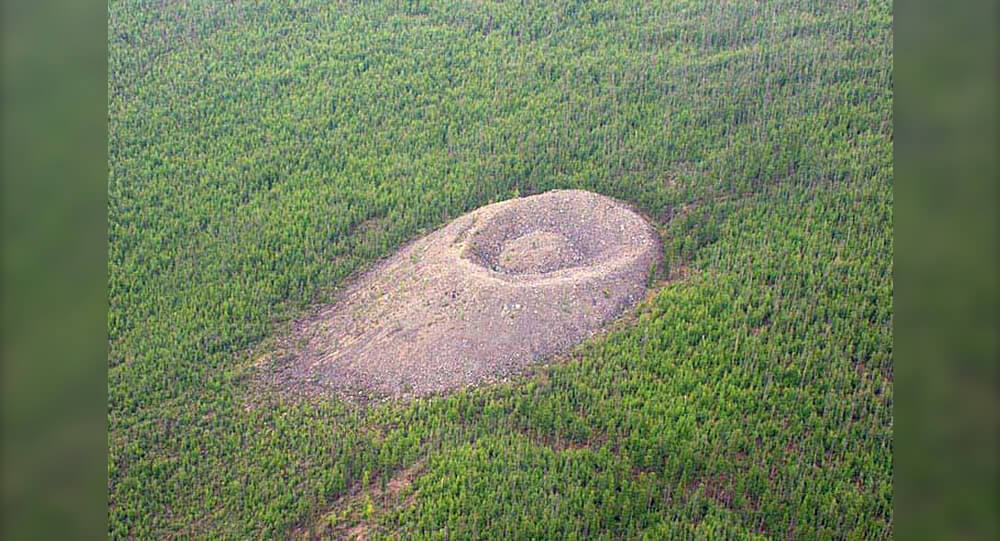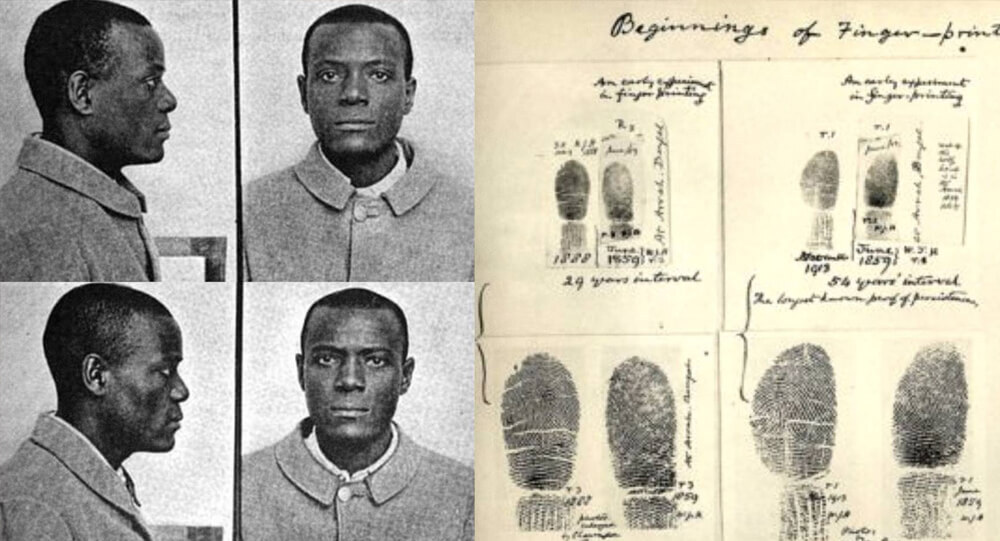
During the winter and spring, the lake northwest of Osoyoos in British Columbia’s Okanagan Valley appears to be any other body of water. However, as the majority of the water evaporates in the summer, hundreds of large brackish pools are left behind, creating a polka-dotted landscape of yellow, green, and blue patches. The CBC describes Spotted Lake as “the most magical site in Canada.”
Formation of Colors and Spots
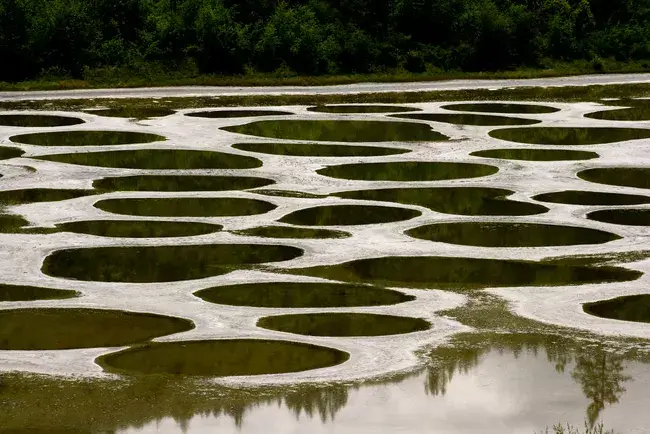
The vibrant pools are the result of a high concentration of minerals in the water, including calcium, sodium sulphates, and magnesium sulphates. Minerals and salts have been washed down from the neighboring hills. The different colors are determined by the mineral content in each pool.
A Sacred History
According to the British Columbia Visitor Centre, Spotted Lake has been considered a sacred spot by the indigenous people of the Okanagan Nation for millennia. Each of the circles was thought to have various therapeutic and medicinal characteristics. Kliluk was the name given to the lake by the First Nations of the Okanagan Valley.
For many years, the land that surrounds the water was privately owned, but in 2001, it was purchased for the benefit and use of the Okanagan Nation. The purchase ensured that the area would be preserved as a cultural and environmental site and would be protected from development.
The Magic of #SpottedLake https://t.co/qHEB3hVq32 #kliluk #nsyilxcen, #TravelBC #travel #Canada #Okanagan #greatoutdoors #photography pic.twitter.com/oek4hSmkCO— Fractions of Destiny (@Destiny_Guitars) March 4, 2017
Minerals from the lake were utilized to make weaponry during World War I. Laborers extracted up to one ton of salt every day from the lake to harvest the minerals. According to the British Columbia Visitor Centre, the “lake presented an even greater diversity of colors and an even greater artistic beauty” before to the mineral mining.
That 'Spotted Lake' in British Columbia is the strangest thing i've seen pic.twitter.com/wNA5eRTn
— elburnez (@elburnez) January 30, 2013
Visitors who wish to see the lake up close can’t approach too close. To safeguard the region, a fence has been built, with a notice noting that it is culturally and ecologically sensitive. However, there are numerous vantage points along the route from which to view the lake’s iconic polka dots.
Though simple and direct science explains the whereabouts of the magical lake, at least one travel website offers a more intriguing explanation. “It’s more fun to pretend you’re living within the scene of a Dr. Seuss book when you visit in person,” says Spot Cool Stuff.

How Were the Two Parts of the Al Naslaa Rock Formation Created?
Scientists have been puzzled by the Al Naslaa rock formation in Saudi Arabia for a long time, and there is still no explanation for why this boulder appears to have a precise incision across the middle of it.

El Ojo, The Mysterious Rotating Island
In the middle of South America, a strange and nearly perfectly circle island moves on its own. The central landmass, known as 'El Ojo' or 'The Eye,' floats on a pond of clear and chilly water, looking strange and out of place in comparing to its surroundings. The bottom appears to be solid in compared to the marsh around it.

Mystery of 300-year-old mummified mermaid is being probed
There is a 300-year-old mummified mermaid with 30 centimetres tall and features a human-like head, two hands with what appear to be fingernails, and its lower body that look like a fish tail. The “mermaid mummy” is being probed by Japanese scientists in an attempt to unravel the mystery of its existence.

Thousands of Rare "Ice Eggs" Blanket Finnish Beach in Spectacular Natural Phenomenon
Thousands of ice balls recently covered a beach in Finland, a rare phenomenon caused by wind and waves sculpting pieces of ice into smooth spheres. These "ice eggs" can vary in size from chicken eggs to soccer balls and have also been spotted in other cold regions globally.

The birth or sign language in Nicaragua
When 50 deaf Nicaraguan children who did not know sign language were placed in the same classroom, they created their own sign language. Scientists are still researching the unique spontaneous appearance of language, as well as its own evolution and training of grammar.

The Heartbreaking Story Of Ella Harper, The ‘Camel Girl’
Ella Harper, Professionally known as the “Camel Girl” was born with a rare orthopedic condition that cased her knee to bend backward. Due to this condition, had to walked on all four legs, which resulted in her nickname as “Camel Girl”. Tough it was hard at first, but soon she made a fortune out of it.

The Mystery of Puma Punku’s Precise Stonework
Pumapunku's stone blocks were meticulously carved and polished to interlock with neighboring stones, forming a puzzle-like structure. The joints between them are incredibly precise. These characteristics show an intricate knowledge of descriptive geometry and stone cutting, indicating the use of highly advanced technology that would have seemed impossible at the time.

The Unsolved mystery of Bobby Dunbar's Disappearance
In 1912, a four-year-old boy named Bobby Dunbar went missing on a family trip, 8 months later he was found and reunited with his family. Nearly a century later, DNA testing of his descendants revealed that the child reunited with the Dunbar family was not Bobby, but rather a boy named Charles (Bruce) Anderson who resembled Bobby.

The mysterious Pumpkin impaled on the top of Tower
Twenty Three years ago, somebody impaled a 60-pound pumpkin 170 off the ground on this spire at Cornell University. Nobody knows who did this or how they did it.

The story of a boy who claims to be on Mars: Boriska Kipriyanovich
Boriska Kipriyanovich, who lives in Volgograd, Russia, claims he lived on Mars before being resurrected on Earth on a mission to redeem humanity. What we know about him is as follows:

What Is the Taos Hum? The Strange Low-Frequency Noise Heard in New Mexico
Since the early 1990s, residents of Taos, New Mexico, have reported hearing a mysterious low-frequency noise called the "Taos Hum." This strange, persistent buzzing or droning sound is only audible to a small fraction of the population and has baffled scientists and locals alike. Despite extensive investigations, the source of the Taos Hum remains unresolved, making it one of the most intriguing acoustic mysteries in the modern world.

Qasr al-Farid, the Lonely Castle of the Nabataeans
The remote tomb of Qasr al-Farid, situated in the Saudi Arabian desert, dates back to the 1st Century CE. It was built by the Nabataean people, who also built Petra in Jordan. This site has remained largely undisturbed.

Jimmy Carter Once Promised to Release UFO Files—Here’s Why He Didn’t
During his 1976 presidential campaign, Jimmy Carter declared a bold intention: if elected, he would make all government UFO information available to the public. A man who openly admitted to having seen a UFO himself, Carter embodied a promise of transparency on one of the most controversial subjects of the Cold War era. However, once in office, Carter found powerful obstacles and, citing "national security concerns," chose not to release the files. This article unpacks Carter’s famous guarantee, the political realities he faced, and the enduring mystery surrounding government UFO secrecy.

Jim Sullivan's Mysterious Masterpiece: 'U.F.O.'
In 1969, a musician named Jim Sullivan recorded an album titled "UFO" which featured a song about him being abducted by aliens in the desert. Years later, Jim disappeared and his car was found abandoned in middle of New Mexico desert. His body has never been found.

The mysterious GIANT spherical stones
Mysterious spherical stones ranging in size from a few millimeters to several meters have been discovered in Crimea, United States, Russia, and New Zealand. There are many theories from various geologists, but none of them are clear.

Jason Padgett: Became a Math genius after head injury in a robbery
Fate has no place in mathematics, yet fate played a role for Jason Padgett and his new fame for being a mathematical genius

Mysterious ghost ship found with mummified captain inside [SOLVED]
German captain had been sailing the world for 20 years. It was unknown when or how he died or how long the ghost ship had been adrift

The mystery of India's 'lake of skeletons'
In 1942, a British forest guard in India made an alarming discovery. Some 16,000 feet above sea level, at the bottom of a small valley, was a frozen lake absolutely full of skeletons.

Sandy Island: The Phantom Island That Fooled Maps and Google Earth for Centuries
Sandy Island, charted since 1774, was long considered a phantom island in the Coral Sea. Despite appearing on maps and Google Earth, it was "undiscovered" by scientists in 2012, revealing only deep ocean instead of land. The island's existence was likely a cartographic error or a misidentified pumice raft.

What is secret behind the Australia’s mysterious pink lake?
Lake Hillier in Australia maintains a bright pink hue all year round. Although no one knows for sure what causes the unique coloring, experts speculate that it might be the result of high salinity, a pink bacteria called “halobacteria,” and a salt-loving algae species called Dunaliella salina.

Top 10 Mysterious And Least Explored Places On Earth
Some people believe that there is nothing unexplored remaining on earth but the world doesn't cease to surprise us with its mysteries. Today I'll tell you about the lost places of the planet and animals that live only there.

The 1978 Lufthansa Heist: Unraveling the Mystery of America's Most Infamous Airport Robbery
During the 1978 Lufthansa heist, robbers infiltrated JFK Airport, restraining employees and holding a night guard hostage. They escaped with $5.9 million—worth over $27 million today. The crime, linked to the Lucchese crime family, remained unsolved for decades, with most suspects vanishing

What Caused The Mysterious Patomskiy Crater in Siberia?
Discovered in 1949, the Patomskiy Crater resembles a huge convex cone with a funnel-shaped recess and a rounded hill in the middle, which looks like an eagle’s nest with an egg nestled inside it. The crater’s origin is a mystery that has baffled scientists for decades.

The Miracle Baby: Nigerian Couple in the UK Welcomes a Rare Blonde, Blue-Eyed Child
A black, Nigerian couple living in the U.K. gave birth to a white, blonde, blue-eyed baby that they call the "miracle baby."

Will & William Wests: The puzzling situation of two inmates who are identical but not related
These are the mugshots of Will West and William West, and they are not related. They were both sent to Leavenworth Prison at the same time, in 1903, and after some confusion, the staff understood they had two different prisoners with the nearly same name, who looked exactly alike. They are part of the reason fingerprints are now used as identification.


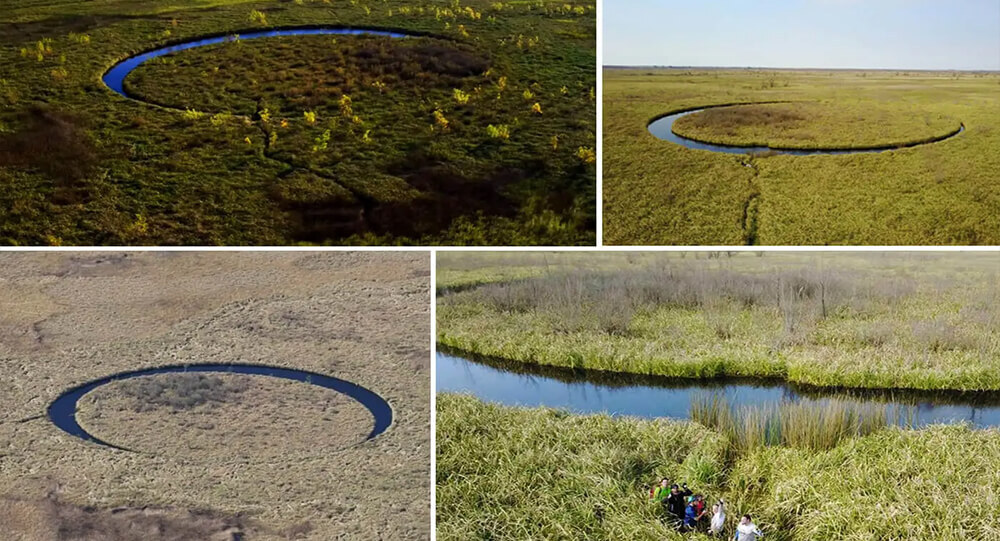
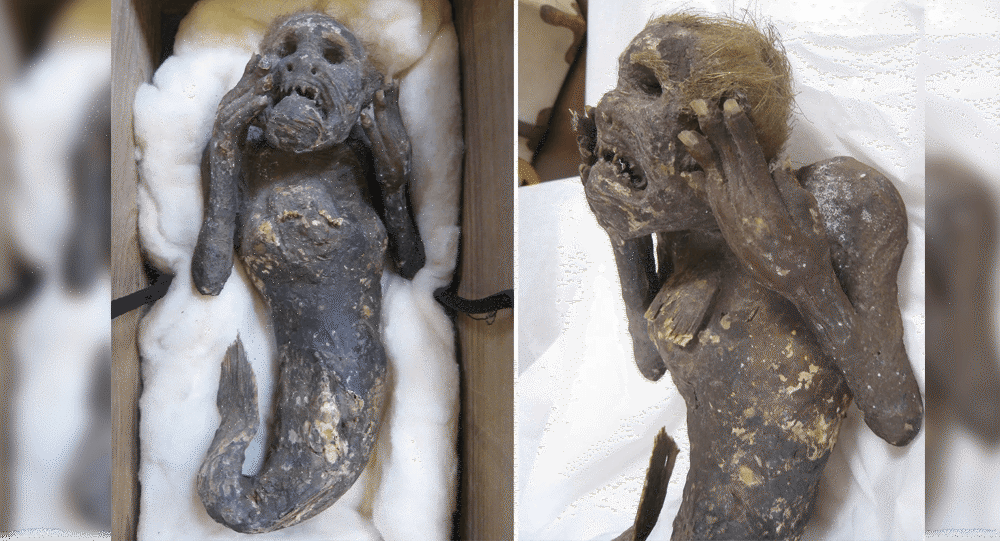


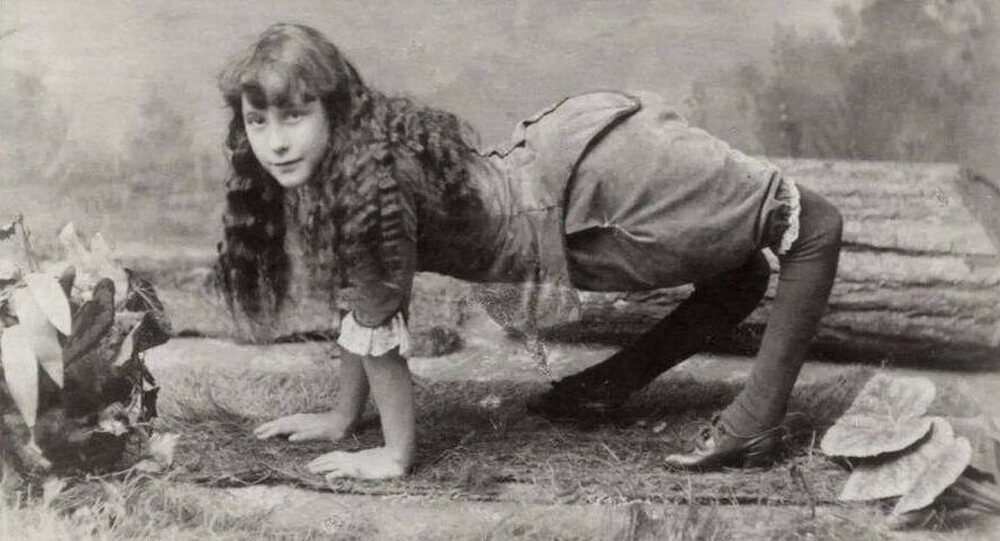
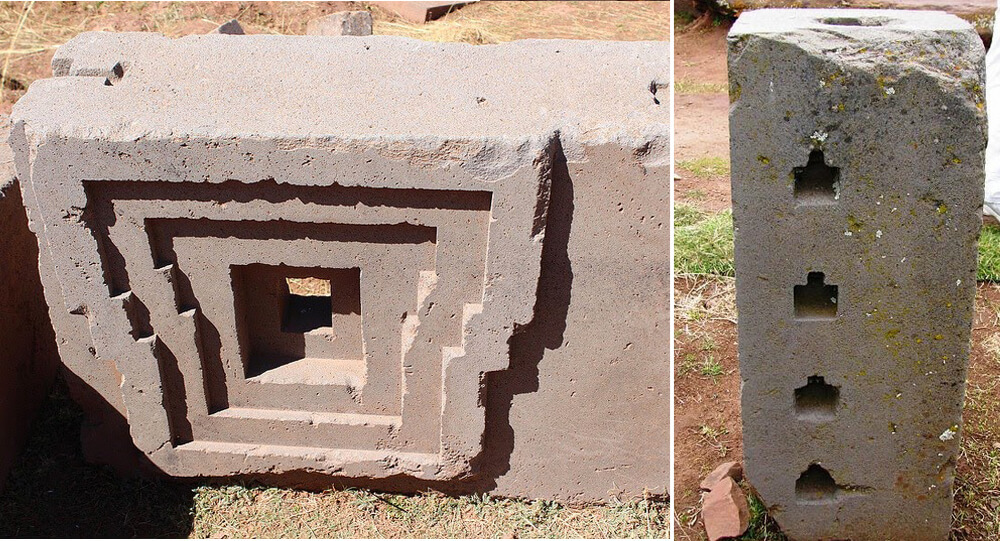


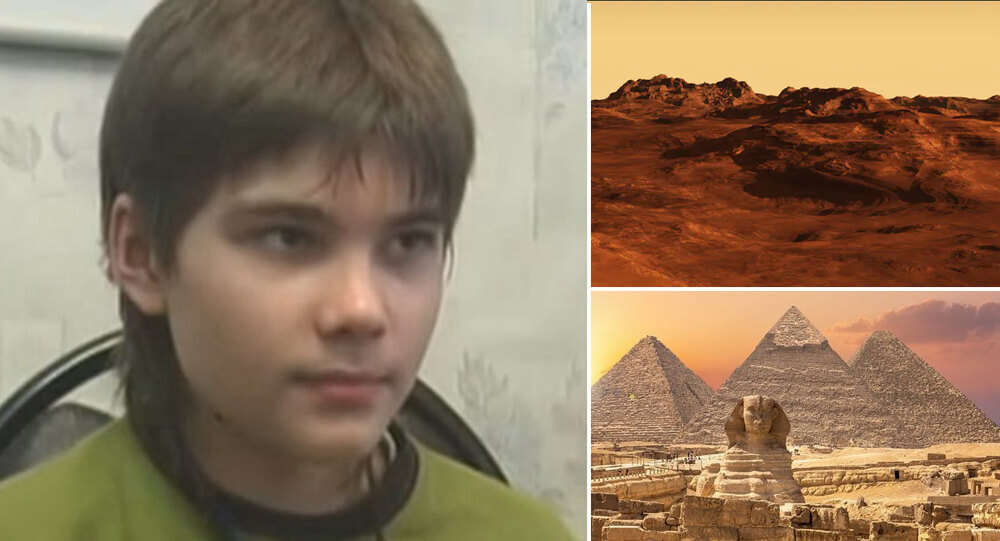



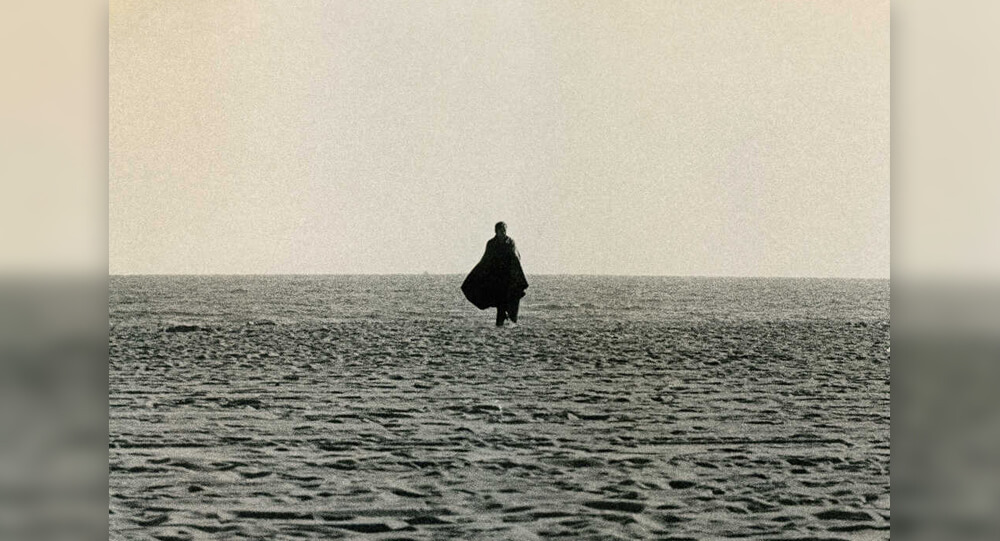


![Mysterious ghost ship found with mummified captain inside [SOLVED]](https://weeklyrecess.com/wp-content/uploads/2024/07/Solved-Mysterious-ghost-ship-with-mummified-captain-cover.jpg)
